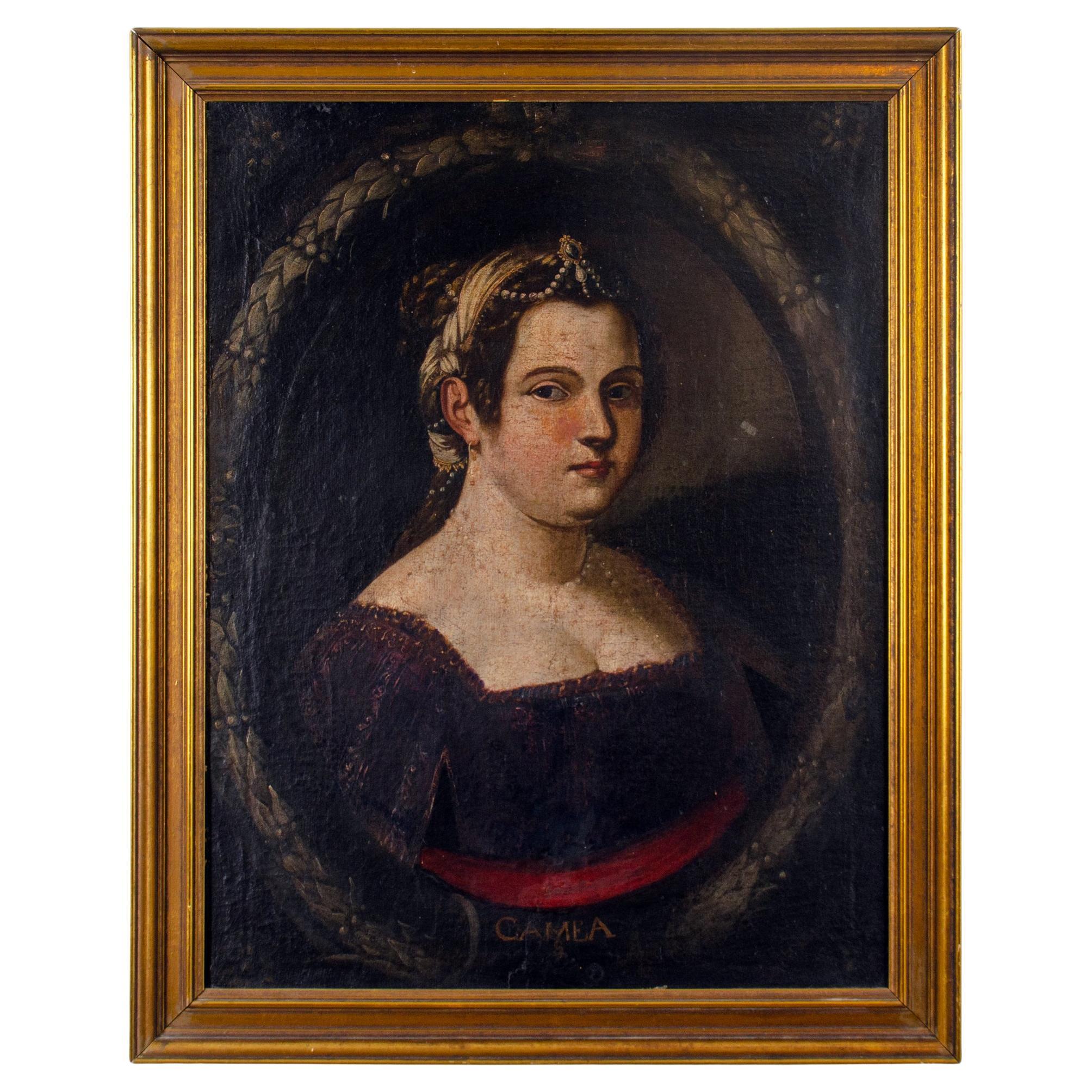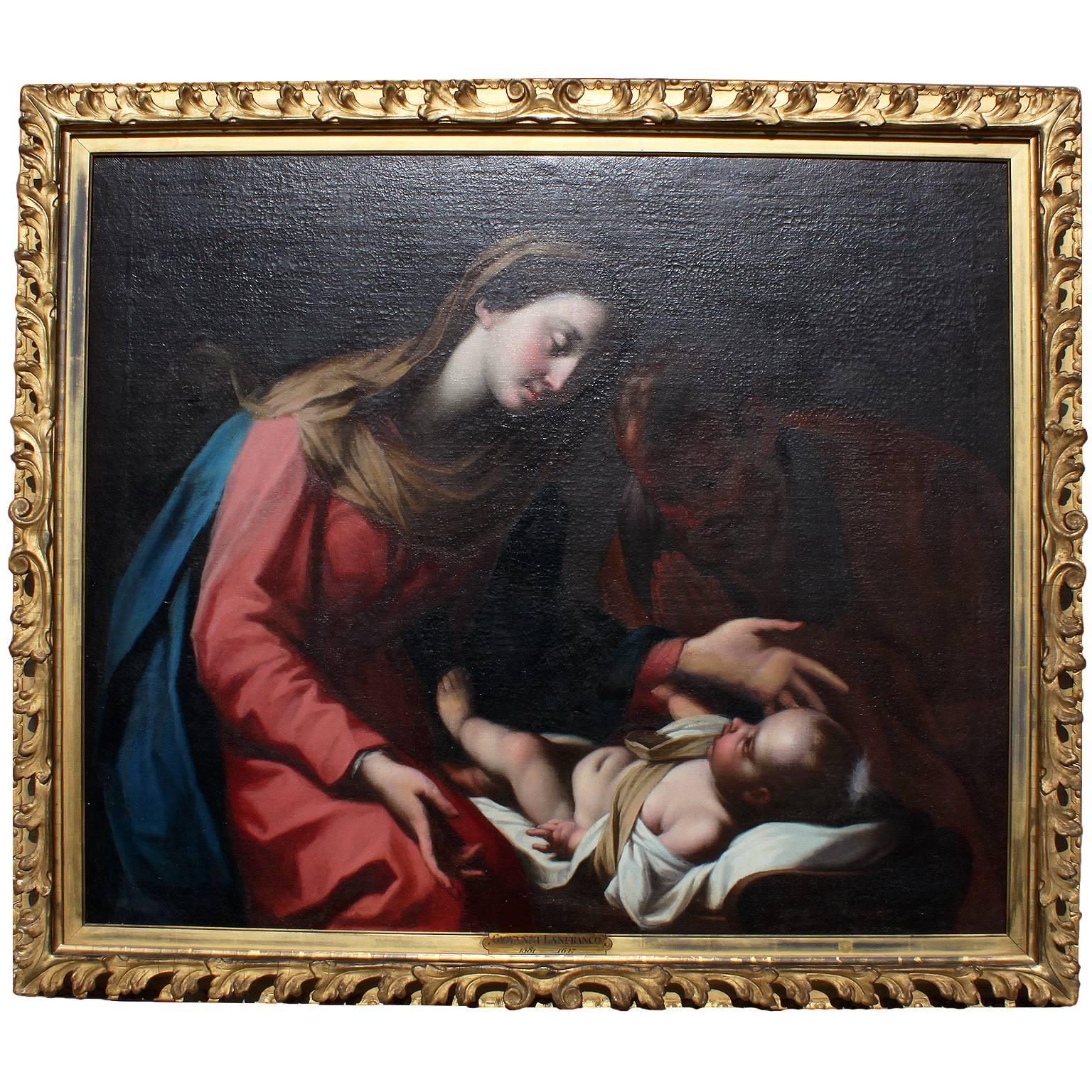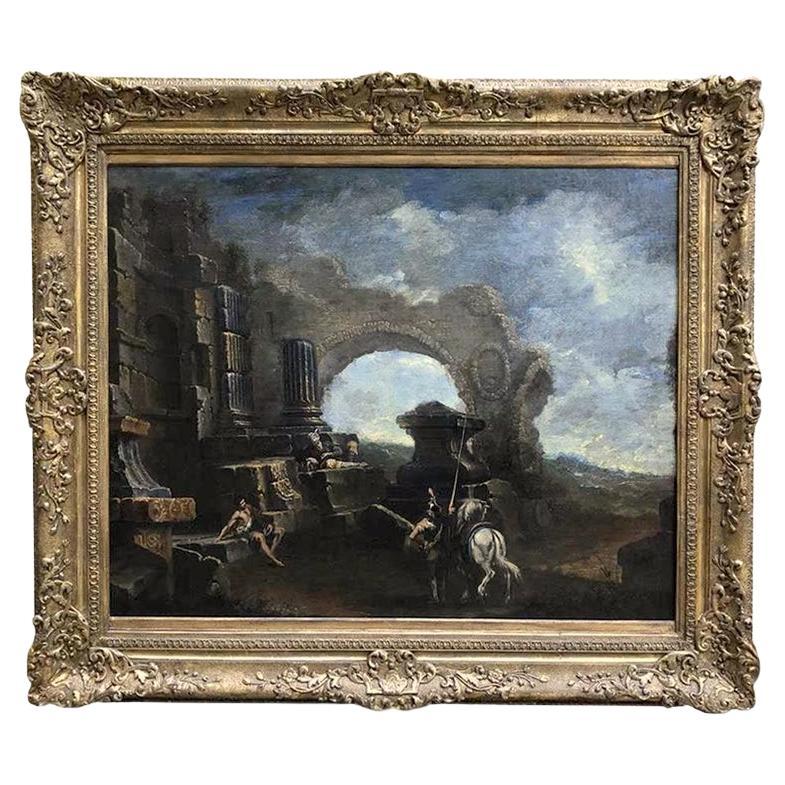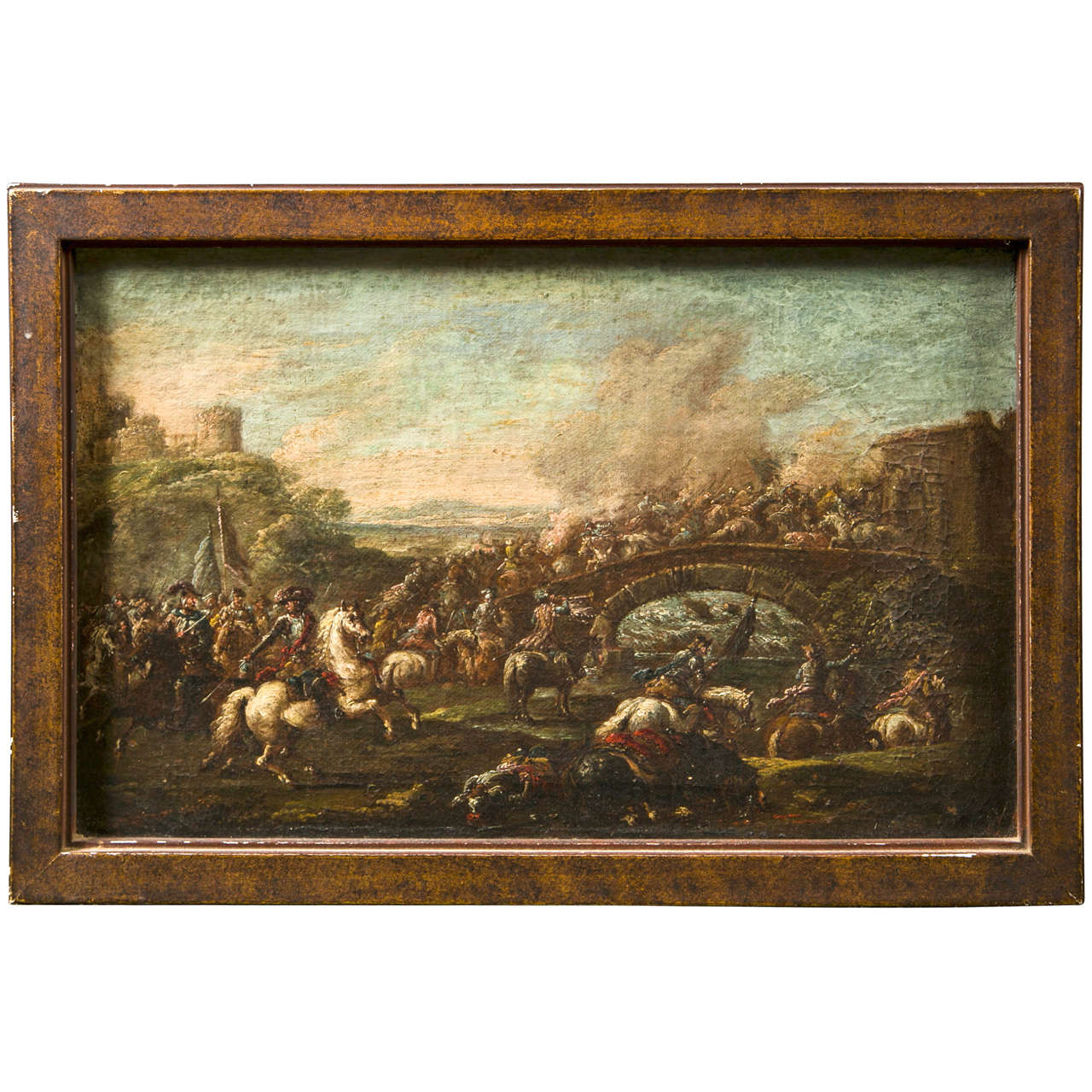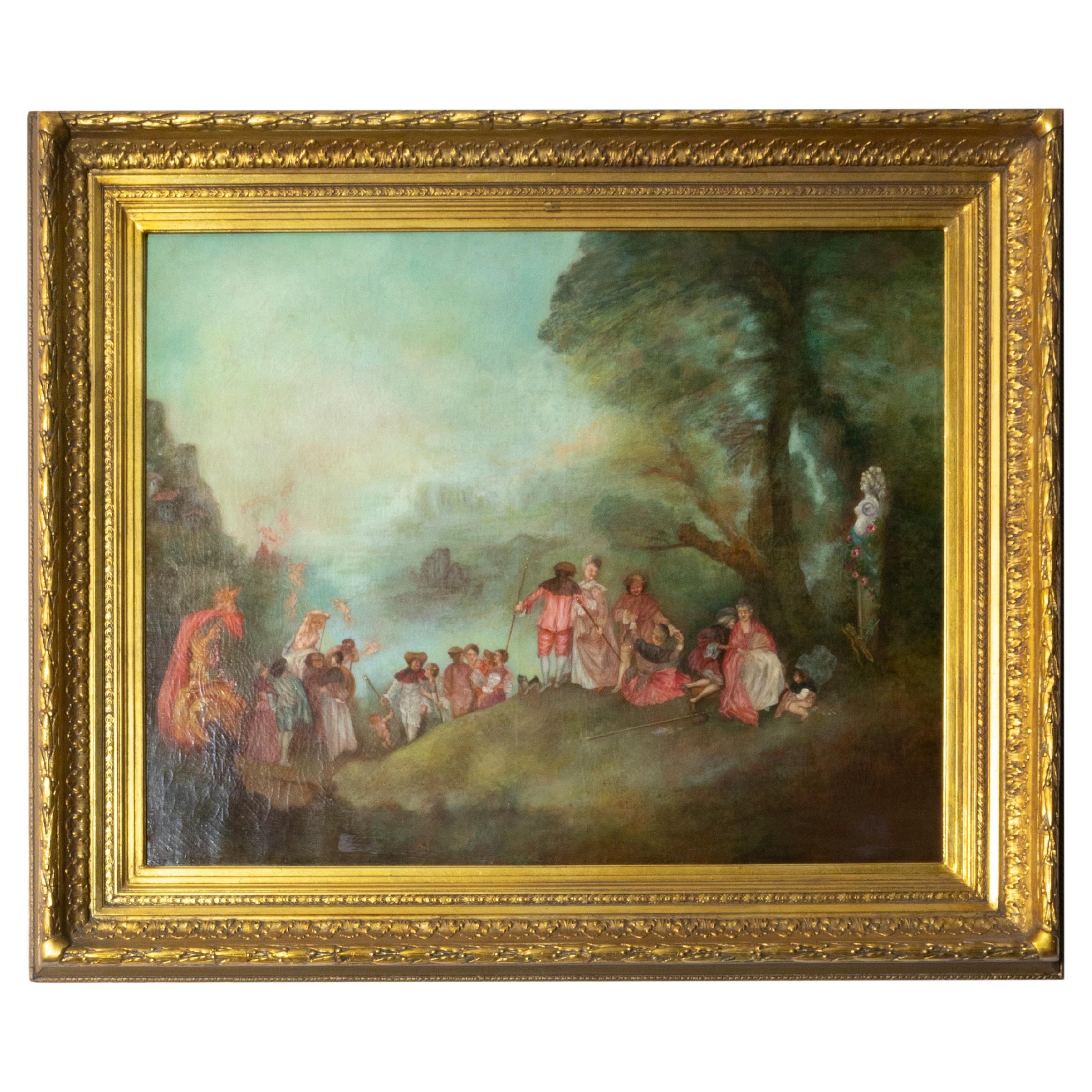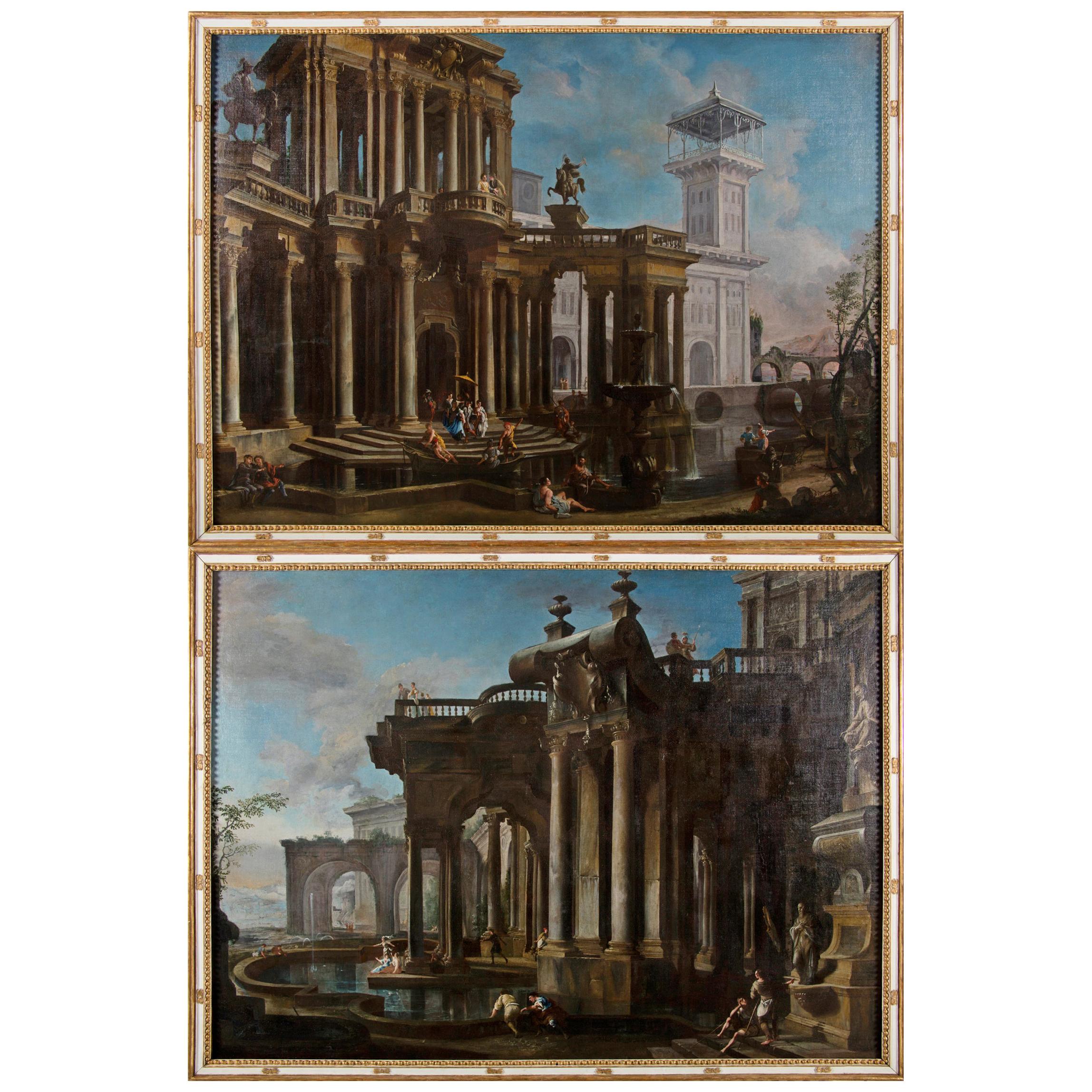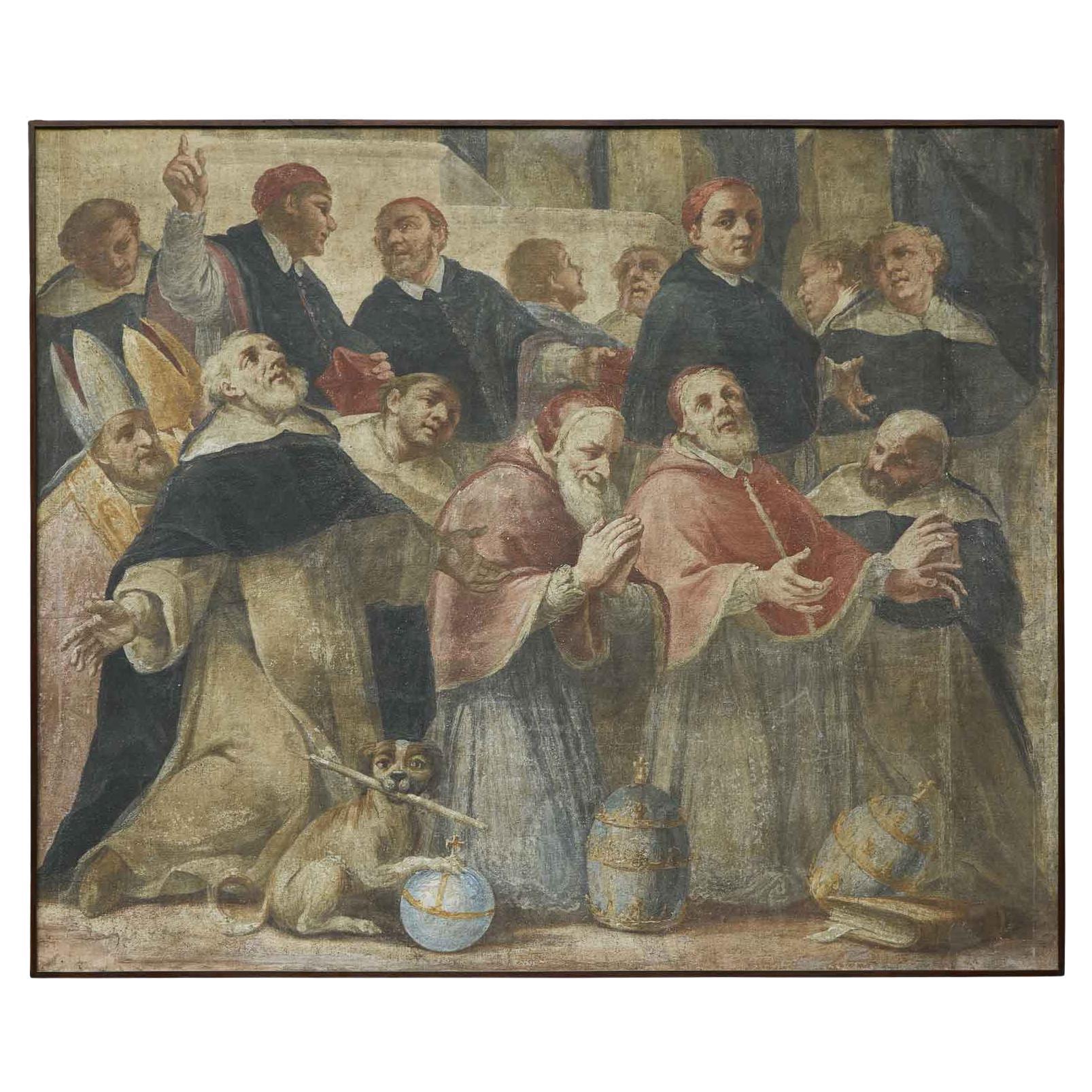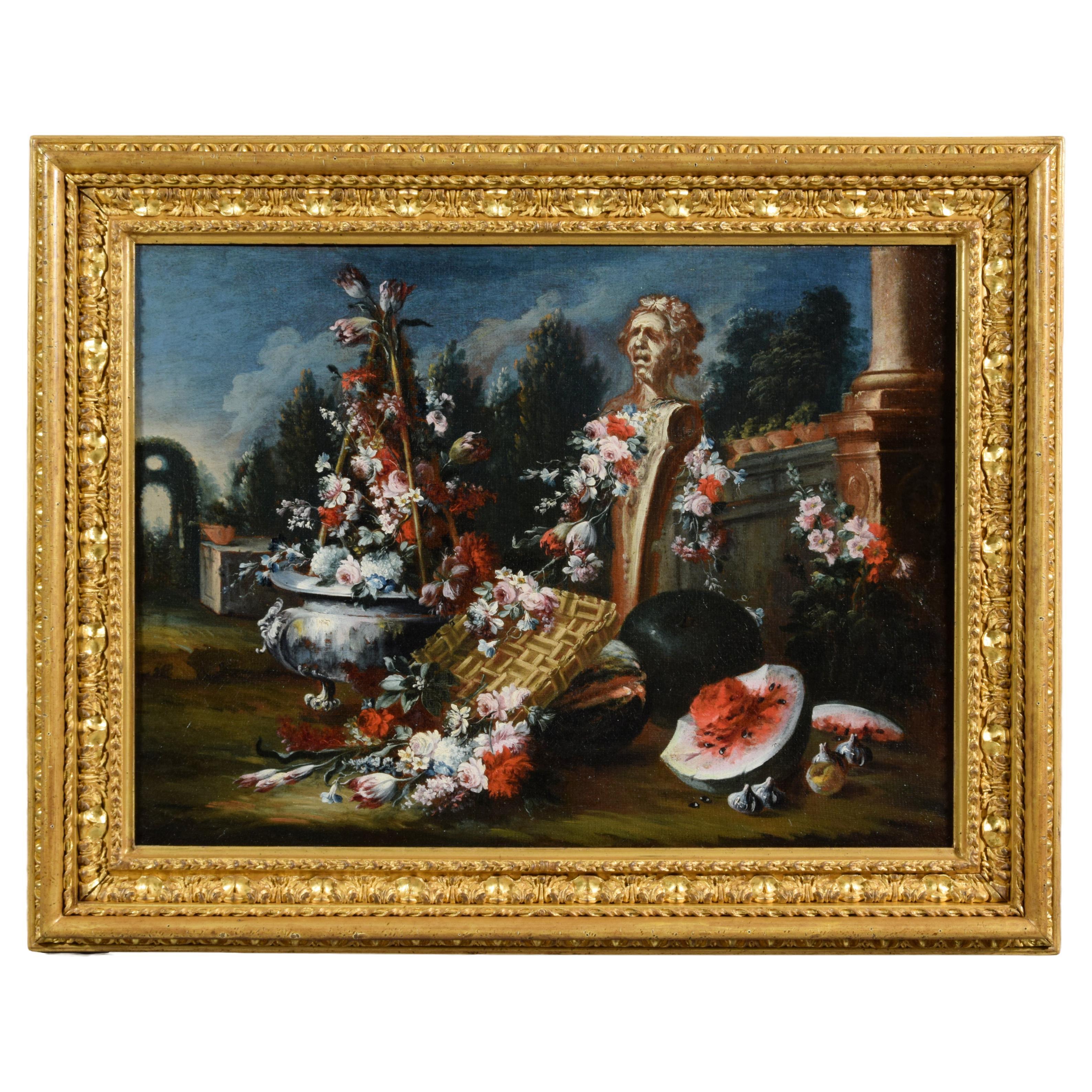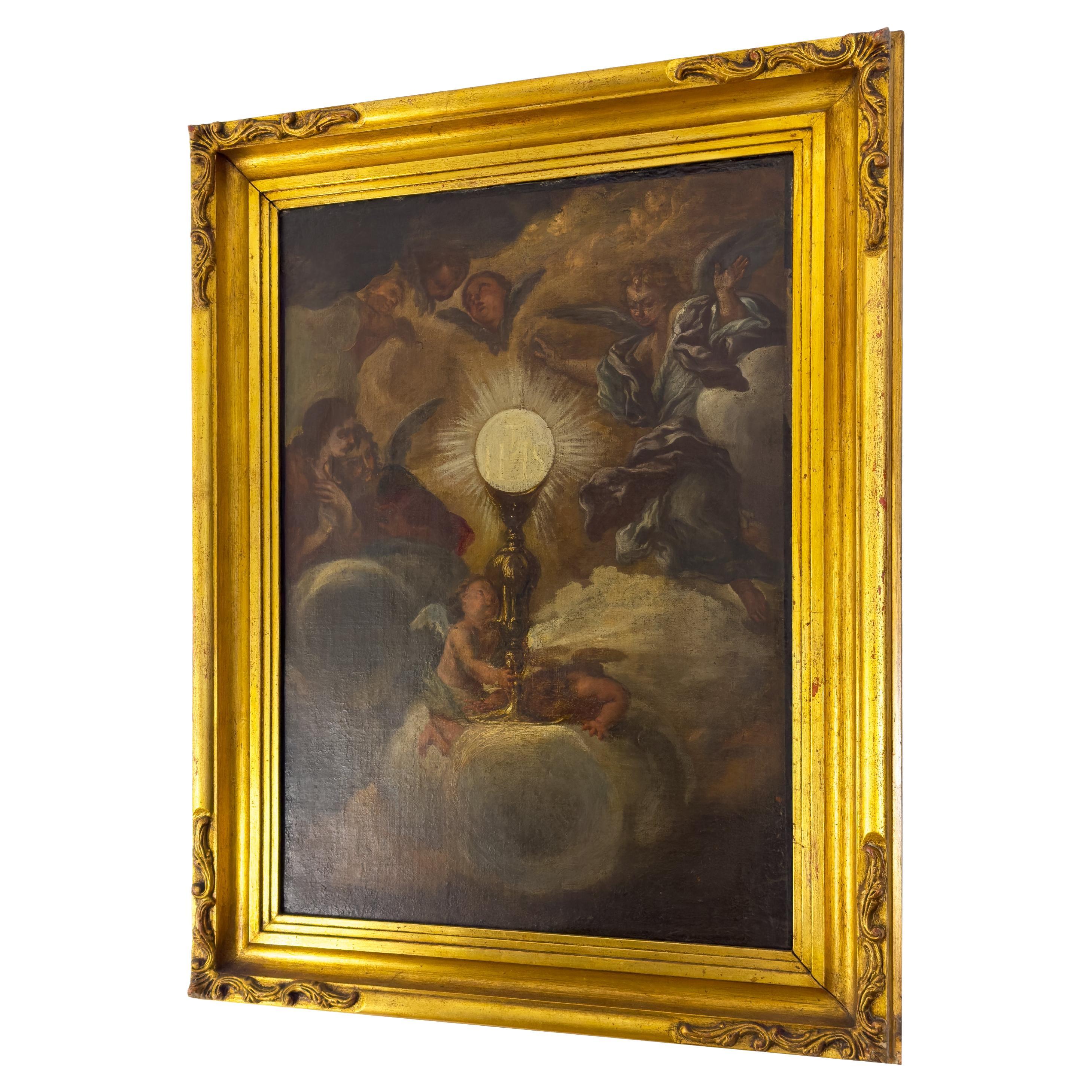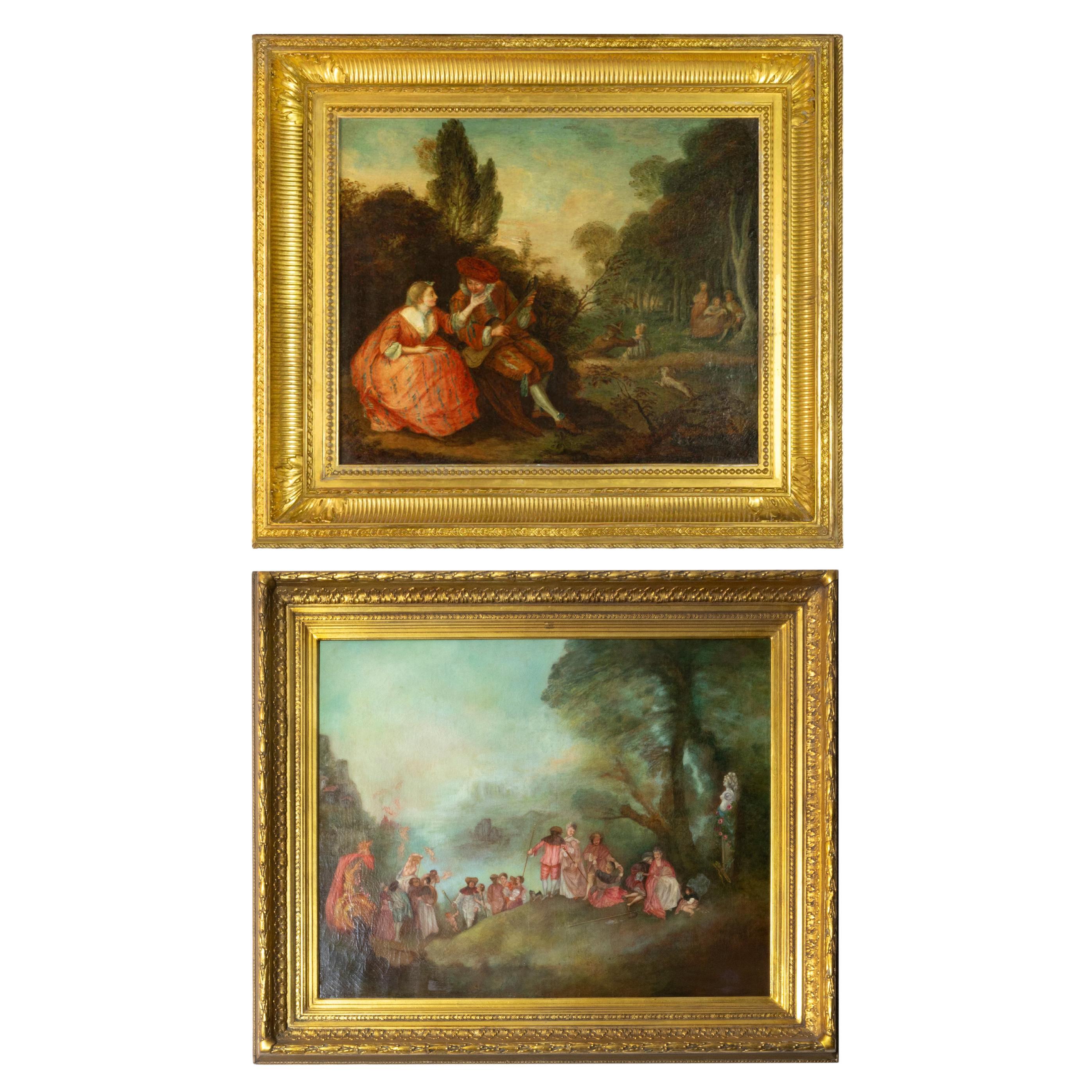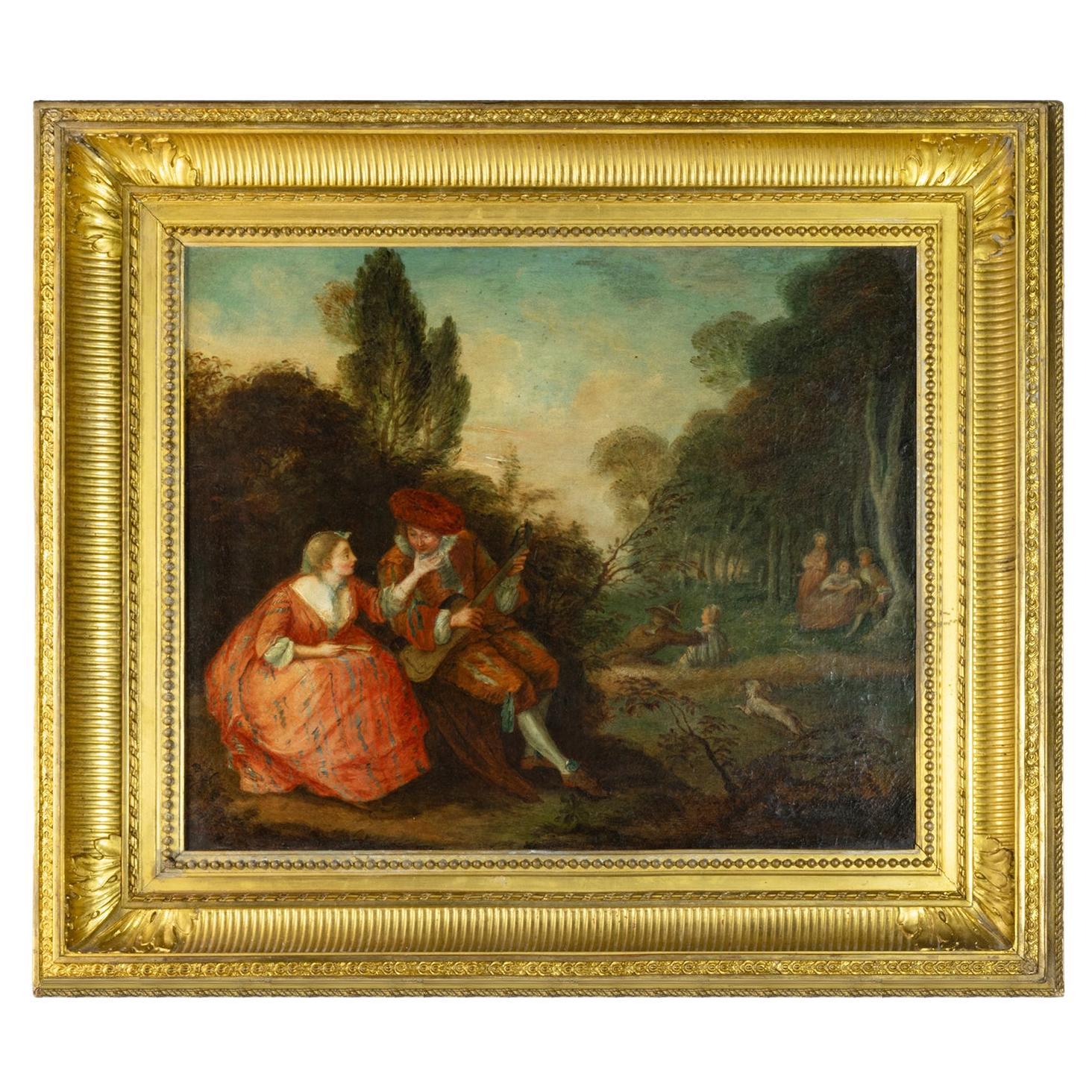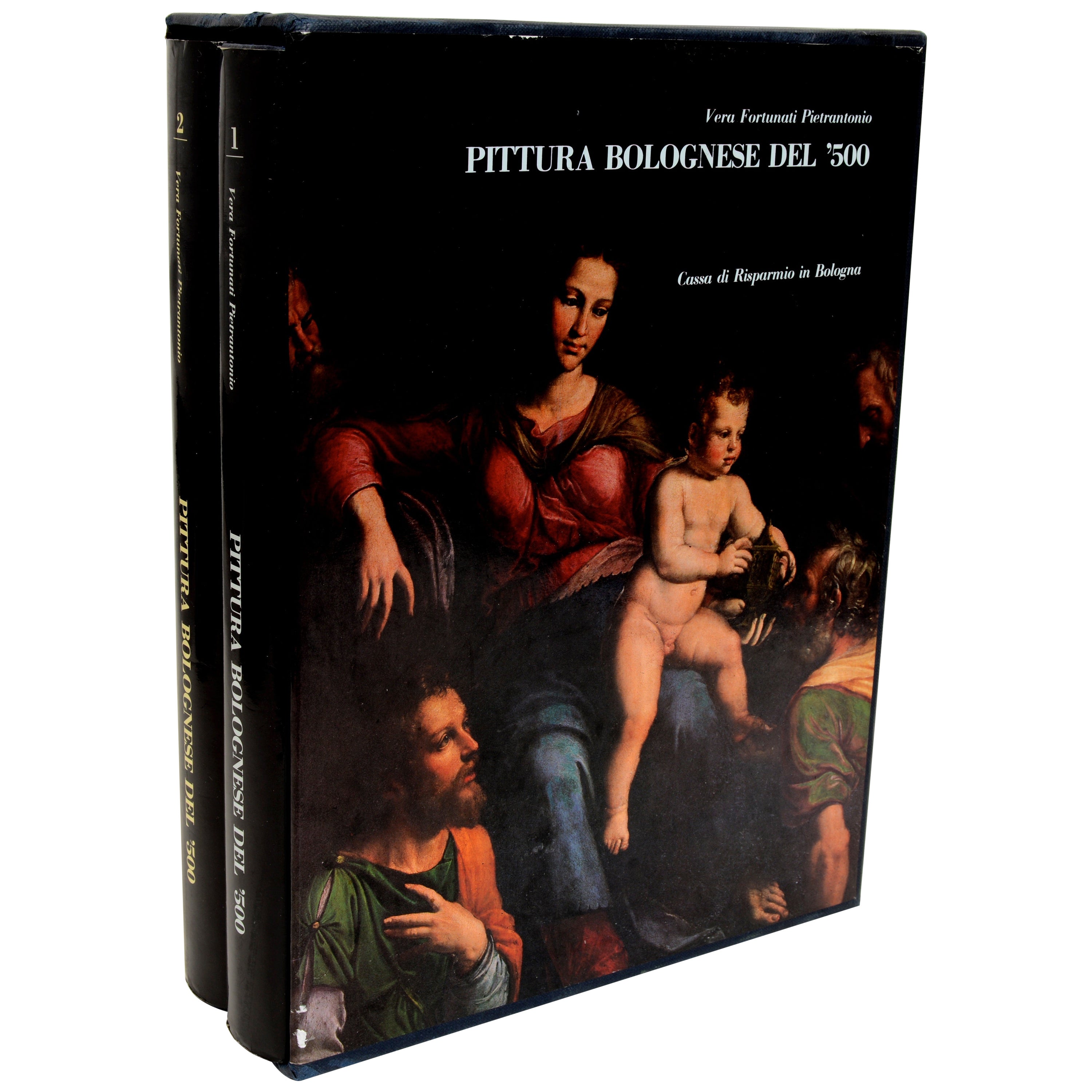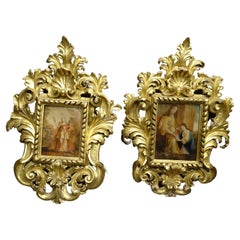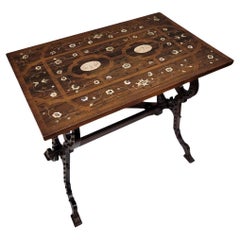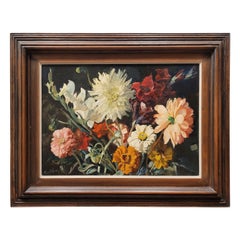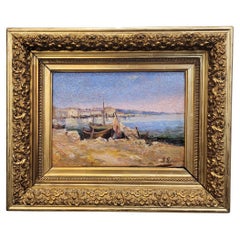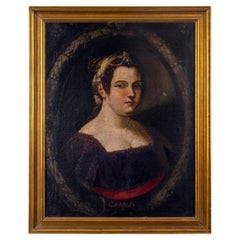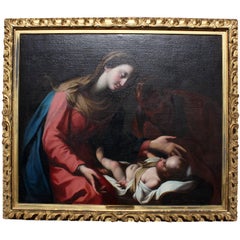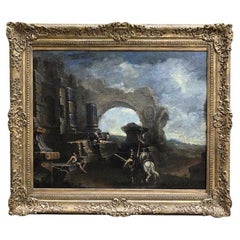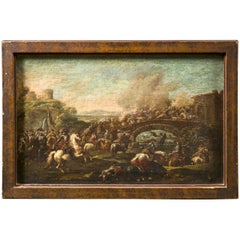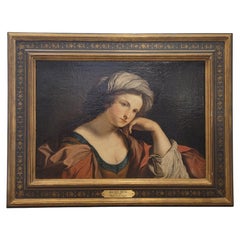
Italian baroque Bolognese schoo"Persian Sibyl"after Giovanni Francesco Barbieri
View Similar Items
Video Loading
Want more images or videos?
Request additional images or videos from the seller
1 of 22
Italian baroque Bolognese schoo"Persian Sibyl"after Giovanni Francesco Barbieri
About the Item
- Creator:Giovanni Francesco Barbieri (Il Guercino) (Artist)
- Dimensions:Height: 33.08 in (84 cm)Width: 43.31 in (110 cm)Depth: 1.97 in (5 cm)
- Style:Baroque (Of the Period)
- Materials and Techniques:
- Place of Origin:
- Period:1680-1689
- Date of Manufacture:1680
- Condition:Wear consistent with age and use.
- Seller Location:Valladolid, ES
- Reference Number:1stDibs: LU2943341845542
About the Seller
4.7
Gold Seller
Premium sellers maintaining a 4.3+ rating and 24-hour response times
Established in 1990
1stDibs seller since 2017
157 sales on 1stDibs
Typical response time: 1 hour
Authenticity Guarantee
In the unlikely event there’s an issue with an item’s authenticity, contact us within 1 year for a full refund. DetailsMoney-Back Guarantee
If your item is not as described, is damaged in transit, or does not arrive, contact us within 7 days for a full refund. Details24-Hour Cancellation
You have a 24-hour grace period in which to reconsider your purchase, with no questions asked.Vetted Professional Sellers
Our world-class sellers must adhere to strict standards for service and quality, maintaining the integrity of our listings.Price-Match Guarantee
If you find that a seller listed the same item for a lower price elsewhere, we’ll match it.Trusted Global Delivery
Our best-in-class carrier network provides specialized shipping options worldwide, including custom delivery.More From This Seller
View All18th Century Spanish Painting on the Glass, Couple of Painting, Gildwood Frame
Located in Valladolid, ES
Amazing pair of baroque cornucopias, with painted glass, s. XVIII, Spanish origin, Andalusian school (Córdoba)
Outstanding pair of Cornucopias in carved wood and gilwood decorated w...
Category
Antique 1780s Baroque Paintings
Materials
Glass, Giltwood, Paint
$8,071 Sale Price / set
20% Off
Italian Baroque style auxiliary table or buffet mother of pearl , bone
By Italian Sculptor 19 th Century
Located in Valladolid, ES
Amazing Baroque style auxiliary table or buffet from the 19th century Italy with a top in refined floral inlay in mother-of-pearl and bone on precious wood. Beautiful floral scenery...
Category
Antique 1860s Italian Baroque Center Tables
Materials
Bone, Mother-of-Pearl, Wood
French Painting "Dahlias and Camellias" Paul Bazé, midcentury France
By Paul Robert Brock
Located in Valladolid, ES
Impressive and very beautiful oil on panel made by Paul Robert Bazé, an artist of French origin. It represents a still life with a bouquet of flowers in the foreground on a dark background. It mainly shows dahlias and camellias, which give the work its name. The traditional still life genre shows its evolution here. It presents the characteristic style of the genre to which it corresponds, realistic and meticulous, especially noticeable in the way it works with the different qualities of the flowers and leaves. The dark background is also inherited from the still life genre, with a marked dark interest reflected in the dark backgrounds. Signed in the lower left corner.
Paul Robert Bazé (1901-1985) was born in Paris, although he soon moved to Bayonne and then to Bordeaux, where he was a student of Paul Quinsac...
Category
Vintage 1950s French Mid-Century Modern Paintings
Materials
Wood, Paint
$1,734 Sale Price
46% Off
France Oil on panel “Marina”, French School
By French House & Garden
Located in Valladolid, ES
Exceptional painting depicting a Mediterranean seascape. The two fishing boats in the center of the composition stand out. In the far distance, a village with a small harbor, charact...
Category
Antique Early 1900s French Beaux Arts Paintings
Materials
Wood, Giltwood, Paint
Catalan Painting St. James’s Park, London”, Josep Mª Vayreda Canadell signed
By Spanish Manufactory
Located in Valladolid, ES
Amazing and Exquisite view of Saint James's Park, a charming British park located in the Westminster area of central London. It is the oldest of the city's Royal Parks. The horizon...
Category
Vintage 1970s Spanish Modern Paintings
Materials
Canvas, Paint
Belgian Painting Allegoric signed by P. Swyncop
By Philip Swyncop
Located in Valladolid, ES
Ó/L “Peace and the arts are worth more than the brutal glory of weapons”, Philippe Swyncop, 1903 – Belgium, Flemish School
Exquisite oil on canvas si...
Category
Antique Early 1900s Belgian Art Nouveau Paintings
Materials
Paint, Canvas
$10,019 Sale Price
20% Off
You May Also Like
The Samian Sibyl, Italian School, c.1700
Located in Savannah, GA
A portrait of The Samian (Camea) Sibyl, Italian school oil on canvas, circa 1700.
sight: 19 ½ by 25 ½ inches
frame: 23 ¾ by 29 ¾ inches
Category
Antique Early 1700s Italian Paintings
Materials
Canvas, Giltwood
Italian 18th Century Oil on Canvas "Madonna and Child" after Giovanni Lanfranco
By Giovanni Lanfranco
Located in Los Angeles, CA
A very fine Italian 18th century oil on canvas "Madonna and Child" after Giovanni Lanfranco (Italian, 1582-1647). The young Virgin Mary attending to...
Category
Antique 18th Century Italian Baroque Paintings
Materials
Canvas, Giltwood
$19,850 Sale Price
39% Off
18th Century Italian Baroque Landscape After Magnasco Large Capriccio with Ruins
By Alessandro Magnasco il Lissandrino
Located in Milano, MI
A Baroque Capriccio with ruins and figures, an early 18th century Italian painting showing an imaginary landscape with roman ruins and figures, an antique oil on canvas Italian...
Category
Antique Early 18th Century Italian Baroque Paintings
Materials
Canvas, Plaster, Giltwood
$10,437 Sale Price
40% Off
Francesco Graziani, Italian Oil on Canvas "Battle Scene on a Bridge"
Located in CH
A late 17th century Italian oil on canvas of a battle scene on a bridge by Francesco Graziani called Ciccio Napoletano (active in Naples late 17th/18th century).
Measurements are ...
Category
Antique Late 17th Century Italian Baroque Paintings
Materials
Canvas
Pilgrimage French Baroque Oil Painting After Jean Antoine Watteau
Located in Lisbon, PT
A very large antiqued reproduction oil painting after Jean Antoine Watteau. Apty titled "Pilgrimage" features an antiqued canvas with unique craquelure and Baroque scallioped frame. ...
Category
Antique 19th Century French Baroque Paintings
Materials
Canvas
Couple of Italian Paintings Depicting Capricci, Francesco Aviani ‘1662-1715’
Located in IT
Francesco Aviani (Italy - Venice, 25-11-1662 / 1715) att.
Couple of paintings depicting Capricci
Oil on canvas, 135 x 183 cm, without frame
The two large and fine paintings depict two illusionistic architectural renderings, with views of colonnades and arched buildings, animated by figures. The compositions are characterized by the harmony with which the painter introduces the sumptuous architectural monuments, the mirrors of water, the buildings in the distance and the views of the landscape. Dominates with a color on the tones of brown and ochre that stands out on the blue sky, marked by some cloud of steam. The insertion of the figures to enliven the architectural views also balances with the set.
The Capriccio, an artistic genre that has made its way into Italian painting since the 17th Century, is characterized by the representation of fantastic architectures or prospective inventions, sometimes combined with elements drawn freely from reality. The two paintings are an example of this type and they are a very interesting and Fine artwork.
The remarkable pictorial quality emerges both from the composition of the ensemble and from the way in which the artist describes the views with great attention to detail, highlights and refined, perfectly realistic, chiaroscuro.
The same must be recognized for the figures: these are described with a wise brushstroke, quick and quick touches give the dynamism of the moment that is captured, as if time had stopped to show and narrate what is happening.
The painting on the right represents a large Baroque building in stone and paved with marbles, two floors, with moving façade, large columns with corinthian columns, a large portal with a staircase with large footsteps, a balustrade with string, from which some figures appear, and two equestrian monuments in bronze. The sumptuous building overlooks a large POOL of water, with a gushing fountain, around which some characters sit. In the second floor is described a white palace from which rises a tower crowned by a structure with wrought iron loggia. In addition there is a bridge and some architectural ruins behind which some mountainous reliefs fade towards the horizon.
On the staircase is described a particular scene. The people seem to be part of a very precise story. A woman, in the shadow of a parasol supported by a servant, would seem to drive out of the palace a man, who, taken under his arm by two maidens with a determined attitude, is led to a boat.
The scene could be identified with the biblical episode of the parable of the prodigal son (Luke 15,11-32), at the moment when the prodigal son is robbed and driven away by the harlots.
The episode tells of a man with two children. The youngest said to his father: “Father, give me the part of my inheritance”. And the father divided the substances. After not many days, the youngest son, collected his things, left for a far country and there he lost his substances with prostitutes and living as a debaucher. When he had spent everything, there came a great famine in that country and he began to find himself in need. Reduced to hunger, he was forced to be a pig herder to survive. He therefore meditated in his heart to go to his father and ask for his forgiveness and to be welcomed anew, even as a servant.
While still on the road, however, the father saw him and ran towards him, receiving him with open arms. He then ordered his servants to prepare a great feast for the occasion, killing for the purpose the "fatty calf". The firstborn did not understand why his brother was given such treatment, and reminded the parent that he, who had always obeyed him, had never received a single kid to celebrate with his friends. The father answered him: «Son, you are always with me and everything that is mine is yours; but it was necessary to celebrate and rejoice, because this brother of yours was dead and came back to life, was lost and was found».
The parable of the prodigal son was often portrayed in painting and the scene he finds most is certainly that of returning home in his father’s arms. Among the many is a canvas by the famous painter Giovanni Paolo Pannini (or Panini) (Italy – Piacenza, 1691– Rome, 1765) kept at the Hallsborough Gallery in London.
Rather rare, however, is the scene of the prodigal son driven and robbed by harlots. There is an engraving by Hans Collaert II (1561-1620) in which this moment is described in the background compared to the moment, narratively later, in which he is penitent among the pigs.
The second painting, certainly pendant of the first, represents a similar palace, with some characters overlooking the balustrade marcapiano and other figures around the large bathtub quadrilobata. In the foreground is described a monument with two large stone sculptures. In the distance some architectural elements and, beyond, the mountains are lost on the horizon.
The studies related to the numerous painters of architectural views and caprices, active in Italy, and the archival documents found, which could better clarify commissions, biographies and certain works, are scarce and sporadic. Therefore there are still many difficulties in reconstructing a catalogue of autograph works for each author. Through paintings in private collections, in museums and paintings passed on the antique market it is however possible to advance some attributions in order to better delineate the various artistic figures.
The style of the works studied here leads to a dating that runs between the 17th and 18th Centuries, with obvious influences dictated by the perspectives of the brothers Galli Bibiena. The analysis of the architectures and the chromatic palette suggests that we are in the presence of a northern Italian and Venetian author. Observing the decorations and the volutes, the brightness and the perspective disposition in fact, we find several analogies with those used by the Vicenza painter Francesco Aviani, excellent in pictorial perspective and architectural views.
The biographical profile of Francesco Aviani (Italy - Vicenza, 1662-1715) was essentially traced in 1956 by Andreina Ballarin, then re-visited by Federica Spadotto in 2014 and Giancarlo Sestieri in 2015. Certain documents about his life are scarce, as are the documented works.
He was born in Venice, probably on 25 November 1662, to Bernardo and a Magdalene whose surname is unknown, and was baptized on 3 December 1662. Between 1701 and 1703 he worked, together with his brother MarCo, sculptor, for the fresco decoration (now illegible) of the church villa in Soella (Vicenza). On October 16, 1703 he married Isabella Carcano. On March 26, 1715 he made a will and died on April 3 of the same year, in Vicenza.
The frescoes in the refectory of the sanctuary of Monte Berico in Vicenza are considered authentic works by Aviani, probably made in 1708; the paintings preserved in the Civic Museum of Vicenza: “Landscape with Lazzaro and the rich Epulone”; “Christ among the doctors”; “The miraculous fishing”, works not datable but with attribution corroborated by style. In addition, the frescoes in the east and west corridors of the Villa La Rotonda, near Vicenza; the fresco in the apse basin of the chapel of the church S. Croce, Vicenza, now destroyed; the frescoes of the central hall of Villa Camerini a Montruglio (1714) and a painting of a “Porto Regio”, of which we have a print engraved by Dall'Acqua.
From his works emerges the artistic background that animated the Venetian culture in the early eighteenth century. The scenic grandeur with which Aviani treats the architecture also suggests a stay in Emilia of the painter, in which he could have come into contact with the environment of the Bibiena. These contacts would be confirmed by the press of Cristoforo Dall'Acqua (Vicenza 1734-1787), “Il porto regio”, after a painting of Aviani. The press was part of a group of engravings, representing royal buildings, reproducing paintings of the Bibiena. In the eyes of Dall’Acqua, therefore, Aviani’s work was not foreign among those of the Emilians.
Inside the sumptuous architectural whims, Aviani often depicts biblical scenes, in which the characters share the space and the narrative rhythm, along with figures drawn from everyday scenes, memories of the Veronese and Bassano heritage. Also in the works covered by this study the author does not seem to want to give up a biblical subject, though the purpose of the paintings appears to be clearly a staging scenography-architectural within which the characters are relegated to the role of extras.
From the examination of the architectural Capriccio gathered under the name of Aviani then emerge common elements. The comparison between these works and the works in question highlights the proximity of the compositions. The imposing and scenic architectures are in fact equally characterized by the perspective-scenographic ability diffused in emilian “quadraturisti” and in Bibiena work. In fact, you can see the spectacular slender architecture in the lower part, the loggias that create chiaroscuro games with arches and binate columns placed on massive bases and overhung by projecting cornices.
Significant also the comparison with two paintings with architectural whims in a night vision attributed to Francesco Aviani.
In Aviani’s works it is possible to find a certain knowledge of the Roman Codazzi paint nd its early development of the eighteenth century, developed with the Locatelli, the Pannini and the less known Domenico Roberti. To Roberti have been recently attributed two works that have some compositional affinity with the canvases in question. The same can be done for a work on the antique market, attributed to Pietro Francesco...
Category
Antique Late 17th Century Italian Baroque Paintings
Materials
Canvas
$78,860 Sale Price
58% Off
